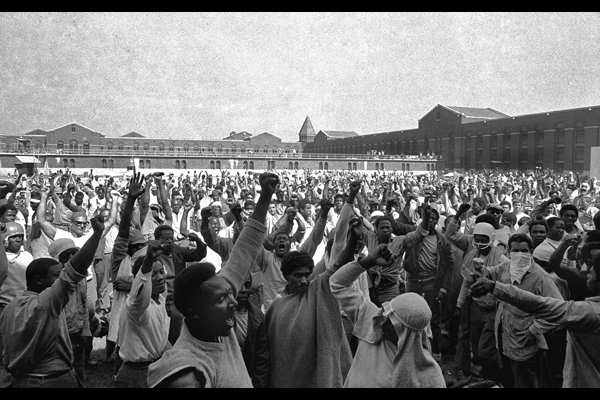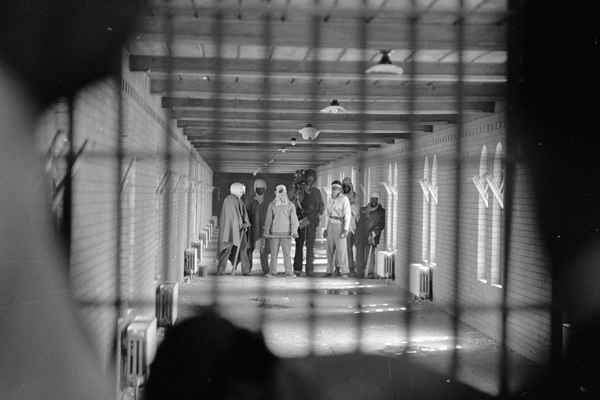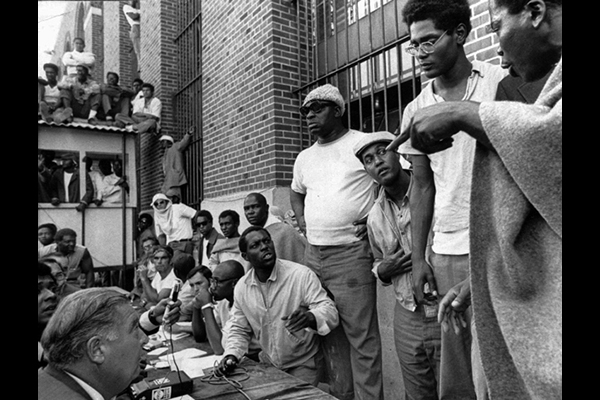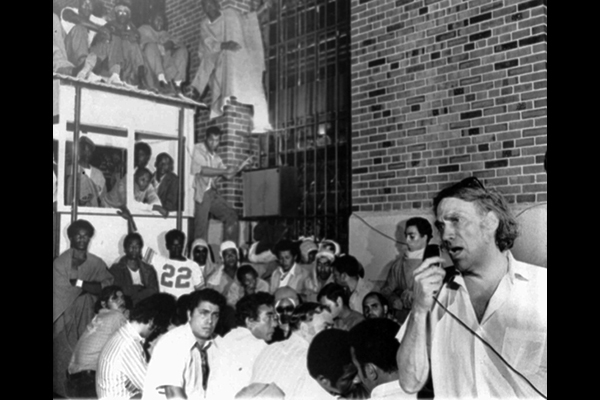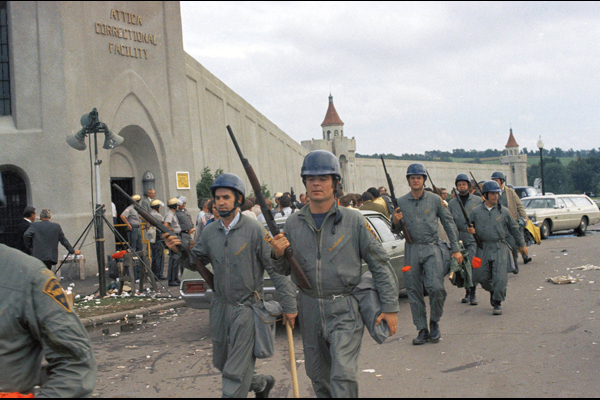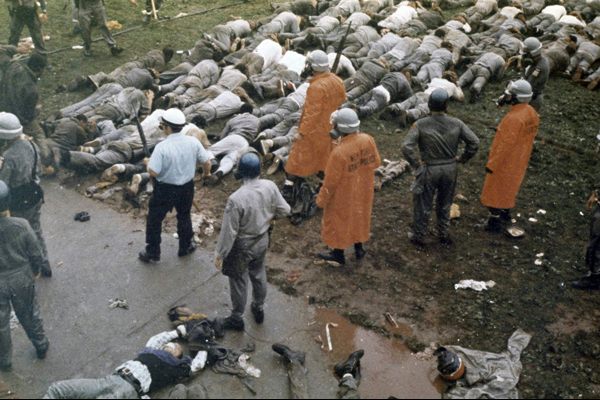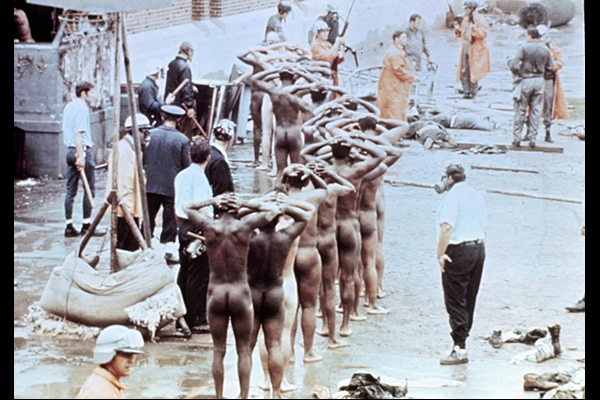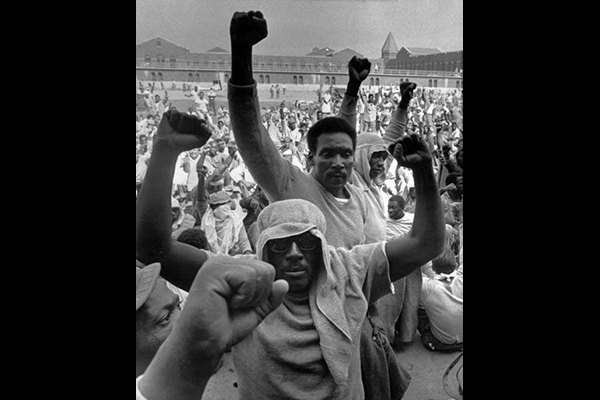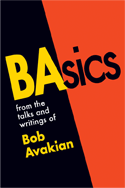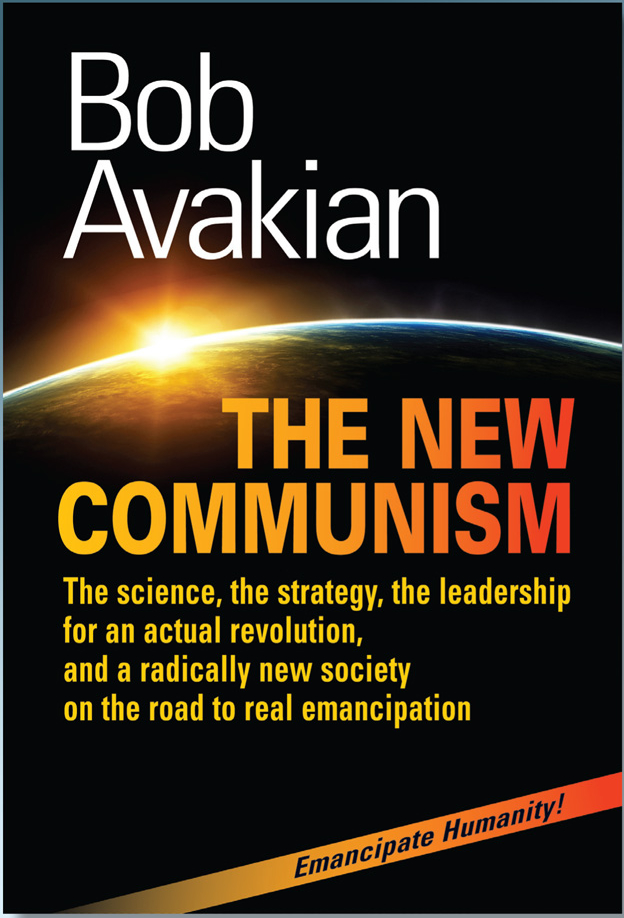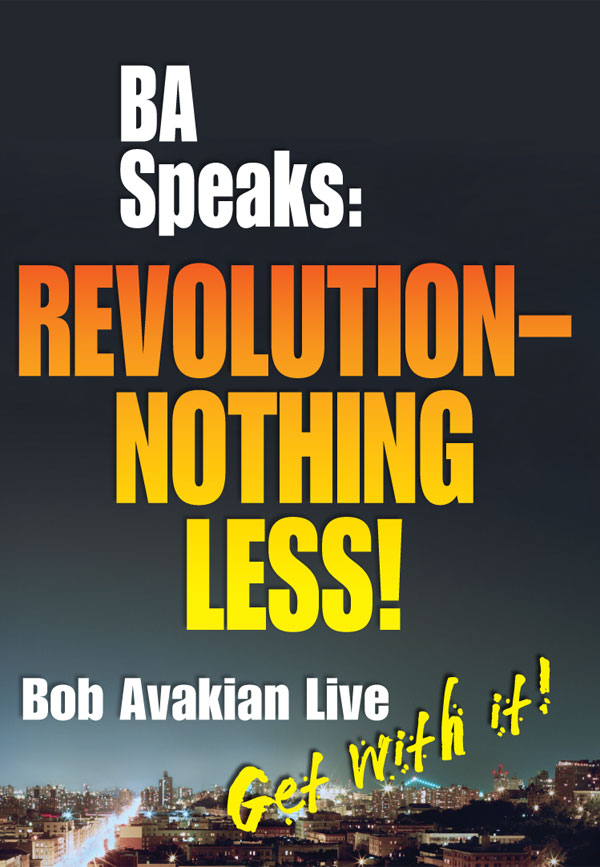Case #81: September 13, 1971—Massacre of Heroic Attica Prisoners
September 5, 2016 | Revolution Newspaper | revcom.us
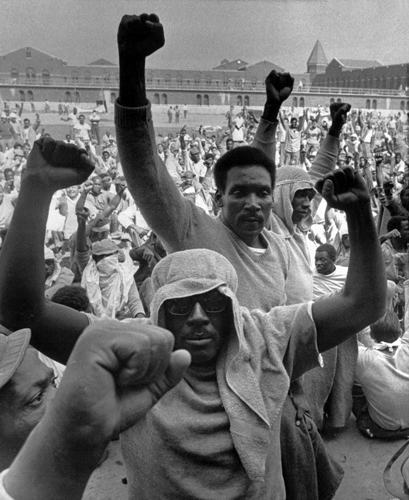
On September 9, 1971, the most powerful and significant prison rebellion in U.S. history erupted at Attica state prison in New York. Attica was part of the Black liberation struggle and the revolutionary upheaval of the 1960s. (AP Photo)
Bob Avakian recently wrote that one of three things that has “to happen in order for there to be real and lasting change for the better: People have to fully confront the actual history of this country and its role in the world up to today, and the terrible consequences of this.” (See “3 Things that have to happen in order for there to be real and lasting change for the better.”)
In that light, and in that spirit, “American Crime” is a regular feature of revcom.us. Each installment will focus on one of the 100 worst crimes committed by the U.S. rulers—out of countless bloody crimes they have carried out against people around the world, from the founding of the U.S. to the present day.
September 9, 2021 marks the 50th anniversary of the prisoners' uprising at Attica..
The Crime: On September 13, 1971, police, sheriffs, park police, and the National Guard launched a murderous assault at Attica prison in upstate New York, killing 39 unarmed people
Four days earlier, on September 9, the most powerful and significant prison rebellion in U.S. history had erupted at Attica. Over half of Attica’s 2,200 inmates, mainly Black but also white and Puerto Rican prisoners, seized control of large parts of the prison, taking 38 guards hostage.
The uprising was fueled by the guards’ routine abuse, horrific living conditions, the state’s refusal to address their grievances, and the racism and national oppression permeating Attica and U.S. society. Many Attica prisoners had been radicalized by the upheavals of the 1960s, and the August 21 murder of the revolutionary prisoner and leader George Jackson, by guards at California’s San Quentin prison, hit them very hard, sparking a silent fast in protest.
The spirit of the Attica Brothers, as they came to be called, was captured by their 21-year-old spokesman L.D. Barkley: “We are men. We are not beasts, and we do not intend to be beaten and driven as such... What has happened here is but the sound before the fury of those who are oppressed...”
The prisoners took control of D-yard and a number of cellblocks. They organized food, medical care, sanitation, workshops, command posts, and a security squad to ensure the safety of the hostages. They issued demands “that will bring closer to reality the demise of these prison institutions that serve no useful purpose to the People of America, but to those who would enslave and exploit the people of America.” Their key demands included complete amnesty for their takeover, transport to a “non-imperialistic country” for those who wanted it, and negotiation through a team of observers that they chose. They set forth 15 “practical proposals,” including freedom for political activity and ending the censorship of literature sent into the prison.
The Attica prisoners reached out to the world and to prominent voices in the U.S., including radical lawyer William Kunstler, Black Panther Party leader Bobby Seale, leaders of the Puerto Rican Young Lords Party, and New York Times writer Tom Wicker. “We are standing here for the oppressed people of the world, and we are not going to give up or knuckle under,” Herbert X Blyden declared, “We are going to show the way, for we know the way!”
The Attica rebellion took place as the U.S. was being rocked by powerful upheavals against the oppression of Black people and the Vietnam War. There was a mass revolt against mainstream American culture. The legitimacy of the existing order was under severe duress, millions dreamed of revolution, and the rulers feared things could slip from their control. They were shocked and shaken by the prison takeover. New York prison officials refused to accept the prisoners’ demands, especially for amnesty. Governor Nelson Rockefeller rejected calls from many quarters to visit the prison. Instead, he and New York’s police forces secretly planned a full-scale military assault.
September 13. The assault began shortly after 9:30 am. when National Guard helicopters showered the prison with a burning, choking fog of CN and CS tear gas. The Attica prisoners had no guns and hadn’t engaged in any violence after their takeover, but moments later over 550 state troopers and sharpshooters opened fire with shotguns, pistols, Thompson submachine guns and semi-automatics. They unleashed an indiscriminate barrage of over 2,000 (perhaps as many as 4,500) rounds. Around 10:00 am, state police ordered prisoners to stand up and put their hands on their heads, assuring them they wouldn’t be harmed. But the shooting continued and surrendering prisoners were hit.
Within 20-30 minutes, the state’s armed forces were rampaging through the prison. “They came in there with their guns and bayonets blasting everything that moved. They shot at everybody,” Attica Brother Akil Al-Jundi recalled. “They went from cell to cell with machine guns, spraying the cells, under the beds. They didn’t care whether there was anybody there. They were just shooting. Their objective was to kill, not to ask questions, but to kill...”
Political prisoners, leaders of the uprisings and others were singled out and executed. Black Panther Kenneth Malloy was shot at least 10 times, including four rounds from a .357 magnum into his eyes from a foot away. Sam Melville, a white revolutionary who reportedly had his hands folded on top of his head in a surrender gesture, was killed by a shotgun blast to his chest. L.D. Barkley was shot in the back with a .270 silver-nose bullet, likely from a sharpshooter’s hunting rifle.
Hundreds of prisoners were forced to strip naked, crawl through mud and broken glass and run a gauntlet of baton-wielding rows of cops. Several bled to death due to denial of medical care after being wounded, left to lie in their own blood, urinated upon by guards, or beaten until their bones broke.
Frank “Big Black” Smith was stripped naked and tortured for six hours. Smith was forced to lie on a table with a football under his chin and told he would be killed if the ball moved or fell, while he was being burned with cigarettes and hot bullet casings and beaten on his testicles. One inmate had his femurs shattered by a bullet but was ordered to walk. When he couldn’t, a trooper repeatedly jammed a screwdriver into his rectum and forced him to crawl.
Twenty-nine prisoners and 10 guards being held hostage were murdered. Another 89 prisoners were wounded by gunfire and 319 more were injured. A week later, a state court investigation found that 90 percent of the inmates still had visible signs of being brutalized.
Sixty-two prisoners were indicted for 1289 "crimes" stemming from the rebellion, but no guards were ever charged, tried, or convicted. Twenty years later, in a civil suit filed by the prisoners, only Deputy Warden Karl Pfeil was found liable for any wrongdoing.
The Alibi: New York authorities claimed they were simply trying to retake control of Attica and rescue the guards being held. After retaking the prison, they claimed prisoners had slit the throats of hostages, even castrated one, and murdered others with zip guns. (This was exposed as a lie the very next day when the medical examiner announced his findings: all the deaths at Attica, prisoners and guards, were caused by gunshots. There were no mutilated genitals, no slit throats, no zip gun wounds. And only the state’s forces had guns.)
Overall, New York authorities and the media portrayed the prisoners as “rioters” bent on carrying out vengeance, while the state had tried to resolve the crisis with a reasonable offer and then simply tried to regain control of the prison and protect the guards who were being held by the prisoners. Governor Rockefeller told President Nixon the official story line, that his police had killed prisoners during the takeover, “though, only when they were in the process of murdering the guards, or when they were attacking our people as they came in to get the guards.” In other words, the state had totally made up these slanders, which the media dutifully reported.
The Actual Motive: Attica was part of the Black Liberation struggle and revolutionary upheaval of the 1960s. It was a declaration of the humanity of those this system treats as “beasts,” and a profound exposure of the barbarity of America’s prisons and machinery of violent repression. It highlighted the ongoing enslavement of Black people. And Attica became a clarion call to rise against imperialism and oppression that reverberated worldwide.
The rulers felt they could not tolerate this challenge to their authority and legitimacy by society’s most oppressed. They feared the impact the Attica uprising was having on the millions from many strata who were following it on television, and witnessing the prisoners’ deep humanity. So Rockefeller, backed by the Nixon administration, felt compelled to not only violently crush the Attica rebellion, but make an example out of it with a savage “shock and awe” massacre to terrorize, vilify, and isolate the prisoners, and to send an unmistakable message to the oppressed everywhere “never dare to do this again.”
The Criminals:
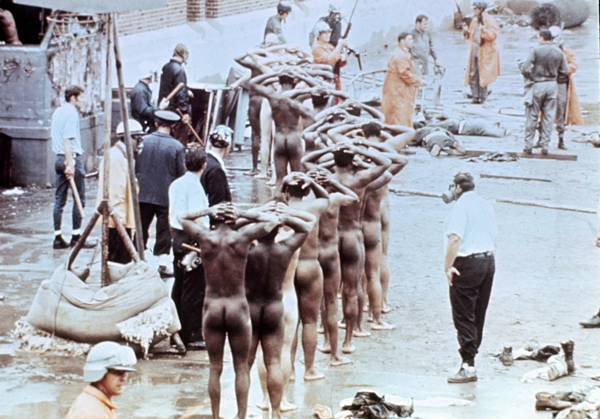
On September 13, 1971, New York State launched a military assault on the Attica prisoners. Helicopters sprayed tear gas, sharpshooters fired into the yard, and state troopers blasting shotguns swarmed against the rebels. Twenty-nine unarmed prisoners and 10 prison guard hostages were murdered, and hundreds more prisoners were wounded or injured. Above, prisoners were forced to strip naked, crawl through mud and broken glass and run a gauntlet of baton wielding rows of cops. (AP Photo)
New York Governor Nelson Rockefeller and the State of New York. An important new book by Professor Heather Ann Thompson, Blood in the Water: The Attica Prison Uprising of 1971 and Its Legacy, which draws from previously secret state documents, reveals that Rockefeller had secret meetings with his state troopers to plot the massacre and fabricate the alibi. And the coverup began before the massacre took place: many of the police and prison officers removed their ID badges; the serial numbers of their weapons were not recorded, and normal reports of ammunition discharged were deemed unnecessary.
Rockefeller phoned Nixon the day of the assault. He said it was a “beautiful operation” and a “superb job.” He confided to Nixon he thought as many as 200-300 prisoners could be killed, but he ordered the operation anyway. The prisoners’ demand for amnesty was totally unacceptable, they both agreed; he and Nixon feared granting it would ignite other rebellions.
Blood in the Water also exposes Rockefeller’s and the state’s cover-up of the criminal massacre at Attica. Long-hidden documents showed that state investigators knew law enforcement had committed murder at Attica, but refused to indict a “long list” of police who had killed or wounded prisoners, including one who fired at Kenneth Malloy so many times at such close range that “his eye sockets were shredded by shards of his own bones.”
President Richard Nixon. The Nixon White House and the FBI closely tracked the Attica uprising, which Nixon saw as “a black thing.” After the state retook control of the prison, Nixon said of Rockefeller, “He’s got a hell of a lot of guts... We have got to be tough on this.” And Nixon told Rockefeller he had his full backing.
Scores of prison officials, police, sheriffs, state troopers, and park police who carried out the murder, brutality, and torture. One, Deputy Warden Pfeil, yelled, “Kill the Jew bastard,” as he watched jailhouse lawyer Jerry Rosenberg being beaten, and then hit Rosenberg across his head with a chain himself. State troopers and police outside Attica could be heard gleefully yelling “white power,” as they reloaded to continue the massacre.
In Their Own Words:
On the day of the massacre, Nixon talked to Rockefeller by telephone and told him:
I know you’ve had a hard day, but I want you to know that I just back you to the hilt...the courage you showed and the judgment in not granting amnesty, it was right, and I don’t care what the hell the papers or anybody else says. I don’t care what they say. I think that you had to do it that way, because if you would have granted amnesty in this case, it would have meant that you would have had prisons in an uproar all over this country...you did the right thing. It’s a tragedy that these poor fellows were shot, but I just want you to know that’s my view, and I’ve told the troops around here they’re to back that right to the hilt.
Sources
“40th Anniversary of Attica Prison Rebellion: ‘We are not beasts and we do not intend to be beaten or driven as such’,” revcom.us, September 11, 2011
“ATTICA!” revcom.us, November 15, 2009
“Attica Brother Akil Al-Jundi,” revcom.us, August 21, 2011
William Kunstler, My Life as a Radical Lawyer, chapter 12 (Carol Publishing Group, 1994)
POV YouTube clip from Disturbing the Universe about the life of William Kunstler
Malcolm Bell, Turkey Shoot: Tracking the Attica Cover-Up (Grove/Atlantic, 1985)
Jennifer Schuessler, “Prying Lose the Long-Kept Secrets of Attica,” New York Times, August 3, 2016
Heather Ann Thompson, Blood in the Water: The Attica Prison Uprising of 1971 and Its Legacy (Penguin Random House, 2016)
Sam Roberts, “Rockefeller on the Attica Raid, from Boastful to Subdued,” New York Times, September 12, 2011
“40 Years After Attica Rebellion, New Tapes Reveal Nixon, Rockefeller Praised Deadly Crackdown,” Democracy Now! September 16, 2011
Bill Berkowitz, "Cover-Up of Slaughter at Attica Prison Continues Decades Later," BuzzFlash at Truthout.org, September 10, 2014
Bruce Jackson, “ATTICA: an anniversary of Death,” Artvoice, September 9, 1999
“Top Government Official Admitted: The ‘War on Drugs’ IS a War on the People,” revcom.us, April 11, 2016
Volunteers Needed... for revcom.us and Revolution
If you like this article, subscribe, donate to and sustain Revolution newspaper.


